Most people don’t like being sold to. They’ve heard the same sales pitch a hundred times. They’ve sat through the same product demo. They’ve been told what they need – before they even said a word.
That’s why so many buyers tune out.
But there’s a better way.
When you focus on the customer’s needs first, you start a real conversation. You build trust. You earn attention. And you make sales feel less like pressure and more like partnership.
This is what customer-centric selling is all about.
- What is Customer-Centric Selling?
- Why This Sales Approach Works
- Start with the Customer Journey
- It’s Not About Changing Your Product. It’s About Changing Your Mindset.
- How LAER® Helps Reps Lead Better Conversations
- What Does Customer-Centric Selling Actually Look Like?
- What Your Sales Team Needs to Shift
- Don’t Forget About Marketing
- How to Build a Full Customer-Centric Strategy
- Real Talk: Buyers Can Tell When It’s About You
- FAQ: Customer-Centric Selling & Relationship Building
- Want to See This in Action?
- Learn More About Customer-Centric Selling
What is Customer-Centric Selling?
Customer-centric selling means flipping the focus. Instead of leading with your product or service, you lead with the customer experience.
You care about what matters to them. You listen more than you talk. You work to understand their goals, their pain points, and their world.
This approach – sometimes called centric selling – makes your sales team more effective because it puts people first.
In a customer-centric company, sales reps are trained to:
The goal isn’t to sell. The goal is to help and gain a full understanding of what the customer needs. And when you help well? Buyers trust you. They buy from you. They stay with you. And that is your competitive advantage.
Why This Sales Approach Works
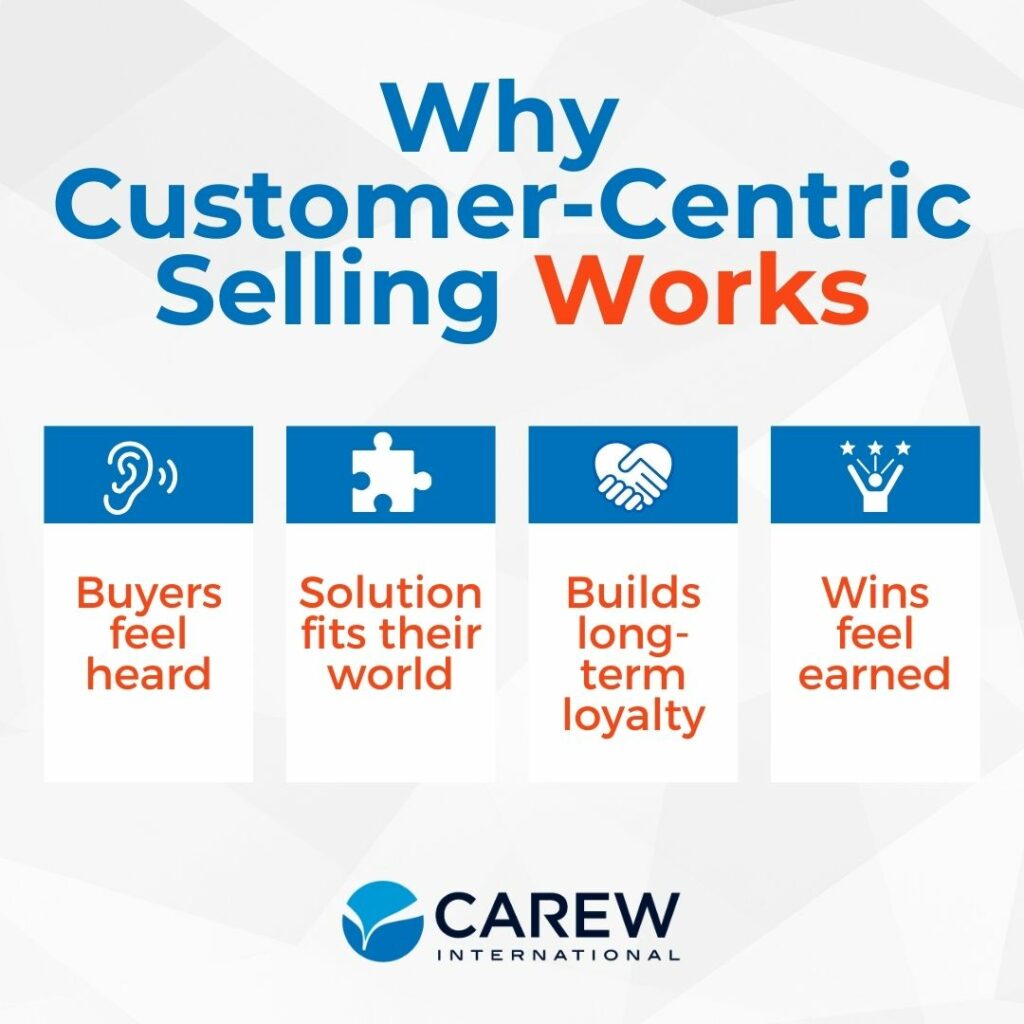
Buyers today are different. They’ve done their homework. They don’t want more features. They want answers to their real problems.
If your message doesn’t feel helpful, they’ll move on fast.
That’s why a customer-centric approach is now the secret to higher customer satisfaction and better sales results.
Here’s what makes it work:
1. Buyers feel heard
When you listen closely and speak their language, buyers feel seen. They know you’re not just there to close a deal, you’re there to help.
2. Your solution fits their world
When you tailor your message to match their specific needs, the offer makes sense. You’re not guessing. You’re solving.
3. It builds long-term customer loyalty
Buyers remember how you made them feel. If the process felt easy, clear, and helpful, they’ll come back, and they’ll refer others too.
4. It helps your team feel more confident
When your sales reps have a simple, clear way to connect with buyers, they do better. Conversations feel smoother. Objections feel easier. Wins feel earned.
Start with the Customer Journey
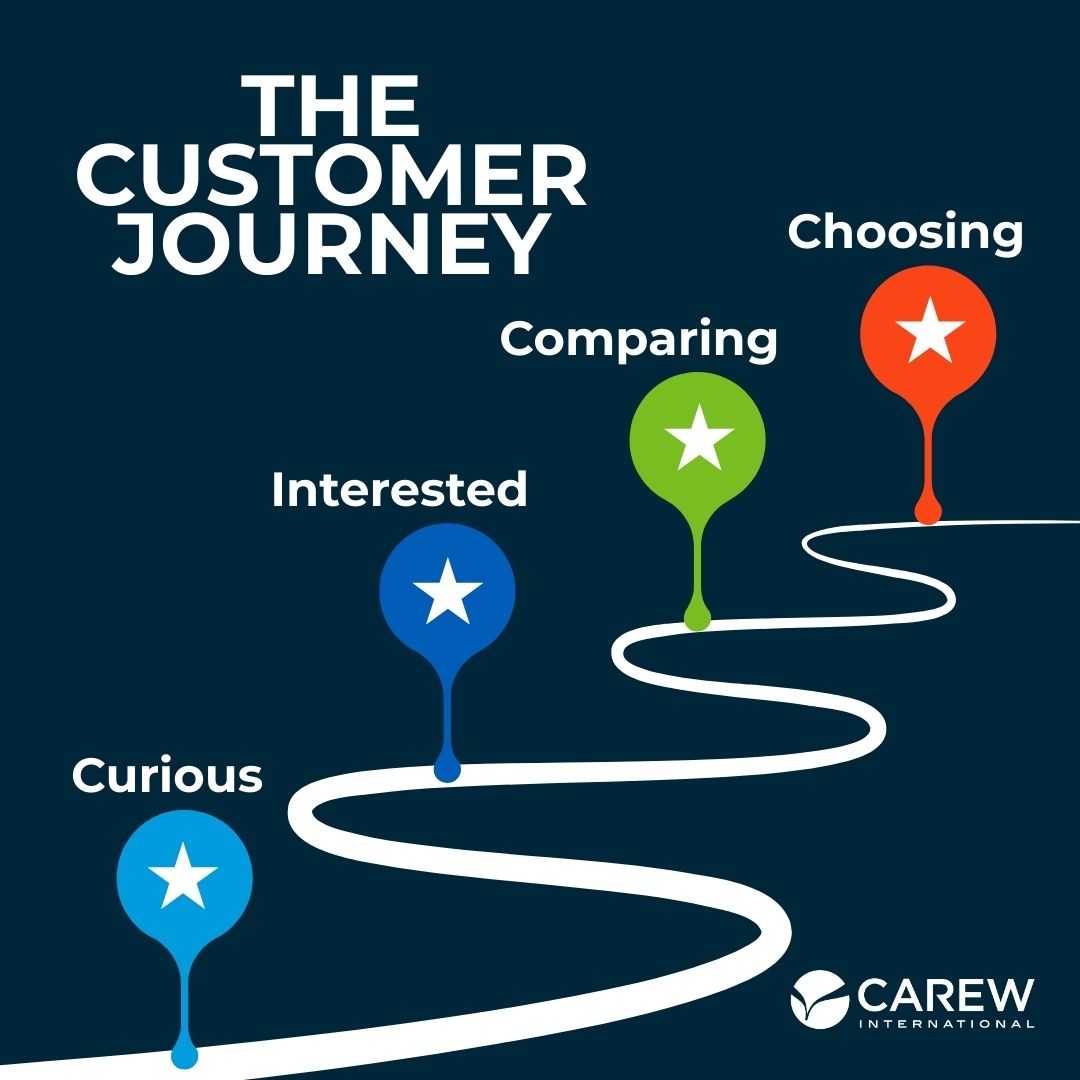
Every potential customer has a path.
They go from curious to interested. From interested to comparing. From comparing to choosing.
That journey feels very different depending on how they’re treated.
A great customer-centric strategy supports the buyer every step of the way.
That means:
The more you focus on the customer journey, the more your buyer feels supported, and the more they trust you to guide them forward.
It’s Not About Changing Your Product. It’s About Changing Your Mindset.
A lot of sales professionals think they have to overhaul everything to sell this way.
You don’t.
You just need to shift your focus from a traditional sales methodology to a customer-centric sales strategy.
Start by asking, “What’s best for the buyer?” at every step. Then adjust your tone, your timing, and your tactics to match.
That’s where Dimensions of Professional Selling (DPS®) comes in.
This course teaches your team how to put the customer first – without losing momentum.
And it all starts with one powerful tool: LAER: The Bonding Process®
How LAER® Helps Reps Lead Better Conversations

Most reps jump straight to pitching and problem solving.
They hear a problem and instantly start selling the solution.
But when that happens too fast, the buyer shuts down.
LAER® gives reps a better way to respond:
This process helps reps slow down, connect more deeply, and guide the buyer with confidence.
In short, LAER® helps your reps lead smarter sales conversations that feel helpful, not pushy. (Learn more about LAER® here.)
What Does Customer-Centric Selling Actually Look Like?
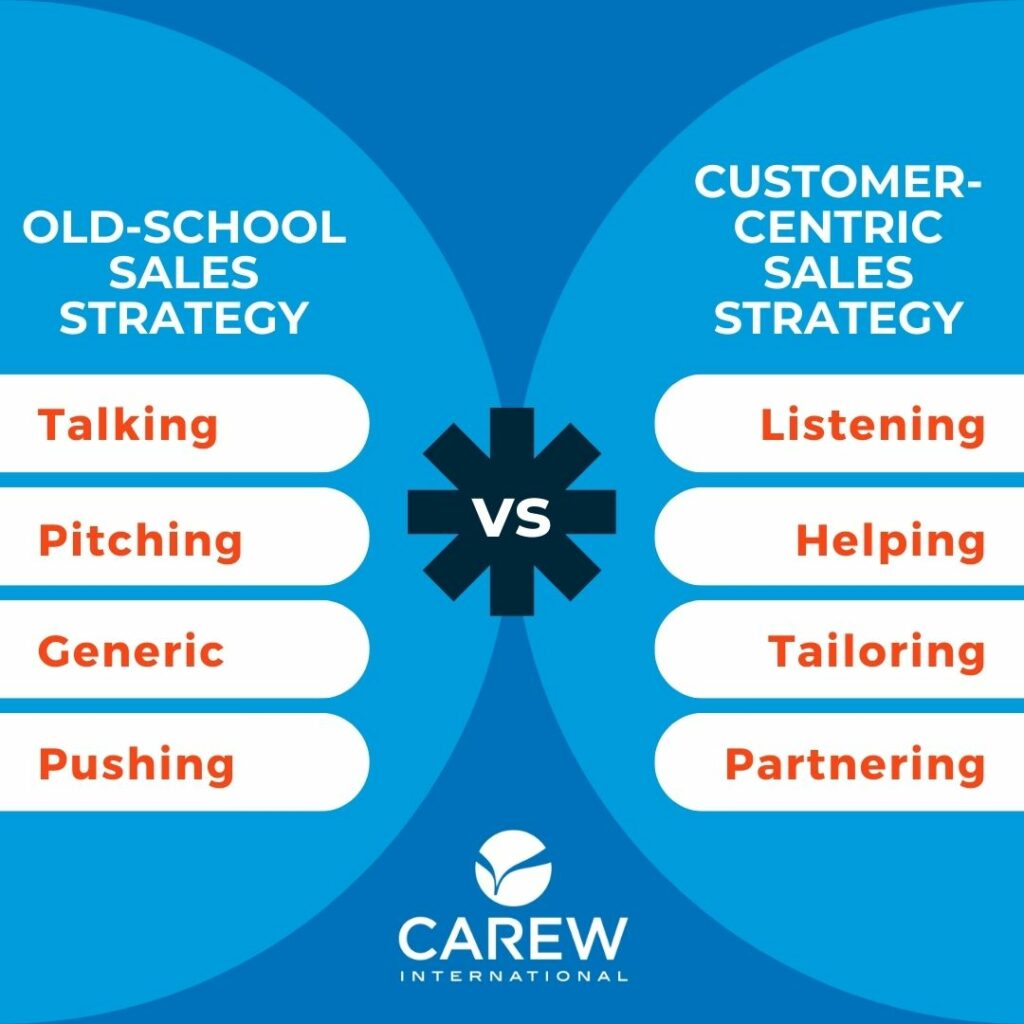
Here’s how a customer-centric sales approach plays out in real life:
| Old School Selling | Customer-Centric Selling |
|---|---|
| Leads with product | Leads with questions |
| Talks over the buyer | Listens actively |
| Pitches to everyone the same way | Personalizes based on customer needs |
| Pushes hard to close | Supports the buyer’s process |
| Thinks short-term | Builds long-term customer loyalty |
What Your Sales Team Needs to Shift
If you want to build a true customer-centric company, your sales team needs support.
Here’s what helps most:
A proven sales training program
Dimensions of Professional Selling® gives sales reps and customer service agents the tools to connect, ask better questions, and stay in control without losing the human touch.
Coaching and repetition
Shifting from traditional sales techniques into a customer-centric selling approach takes practice. Role-playing exercises. Feedback. Wins. And the occasional flop.
A mindset shift
Selling isn’t just about winning deals. It’s about building trust. That starts with caring about the person on the other side of the call, learning their unique challenges and offering exceptional customer support throughout the process.
Don’t Forget About Marketing
If you want your sales team to connect with buyers, your customer-centric marketing needs to support them.
That means:
When sales and marketing work together, the buyer feels like the hero – not the target.
How to Build a Full Customer-Centric Strategy
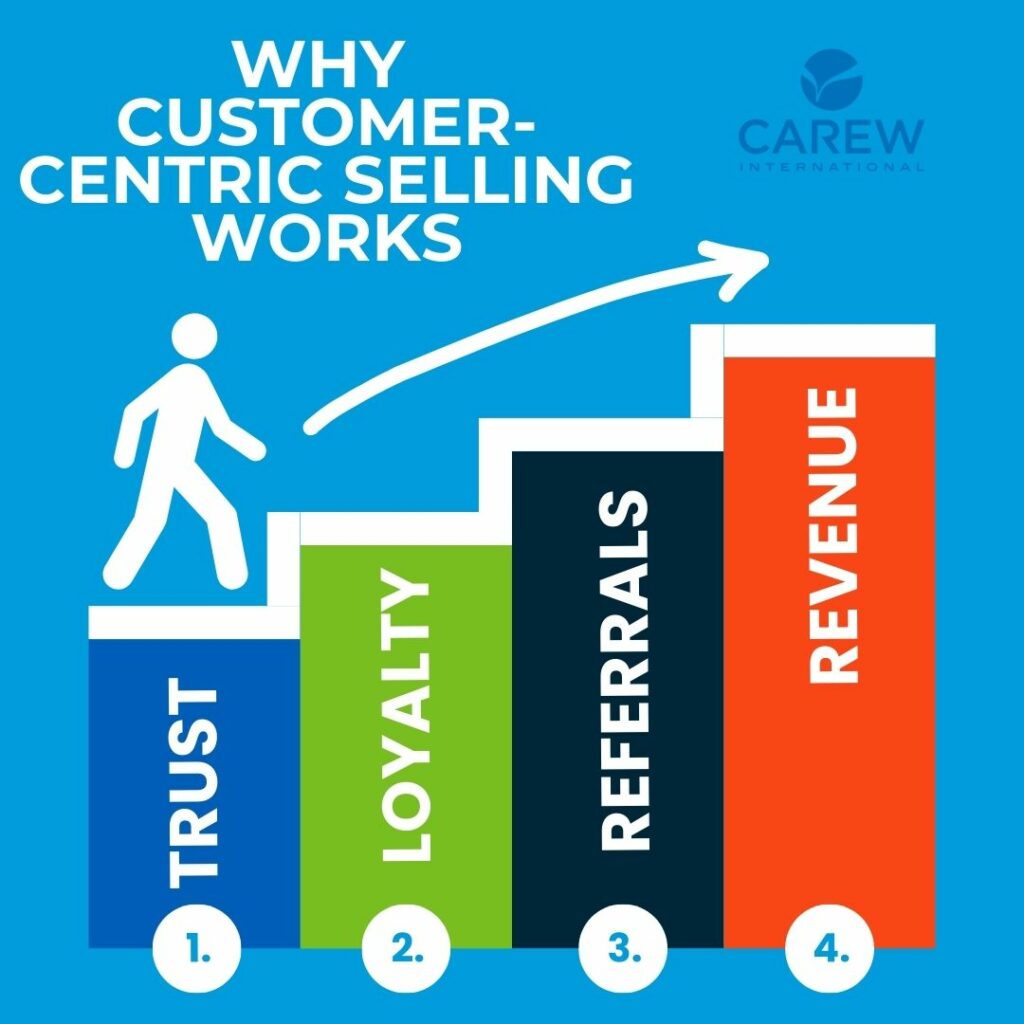
To make customer centricity part of your company’s DNA, follow these steps:
1. Learn the buyer’s world
What does your potential client care about? What pressure are they under? What outcome are they chasing?
When you understand their day-to-day reality, you can talk like a partner, not a salesperson.
2. Use the LAER® process to ask the right questions
Ask things like:
- “What’s getting in the way right now?”
- “What would make the biggest impact for your team?”
- “What’s already working that we can build on?”
This helps you tailor your sales strategy to what actually matters. (Here are a few more questions you can ask.)
3. Focus on the experience
The customer experience is more than a transaction. It’s how people feel about working with you – before, during, and after the deal.
Make every part of your process feel clear, personal, and respectful of their time.
4. Earn trust by being honest
Say what’s true. Don’t oversell. If something’s not a fit, speak up.
Buyers respect that. It’s rare, and it builds loyalty fast.
5. Think beyond the close
Great sellers don’t disappear after the deal is done.
They check in. They ask for feedback. They look for new ways to help.
And that’s how they keep winning – deal after deal.
Real Talk: Buyers Can Tell When It’s About You
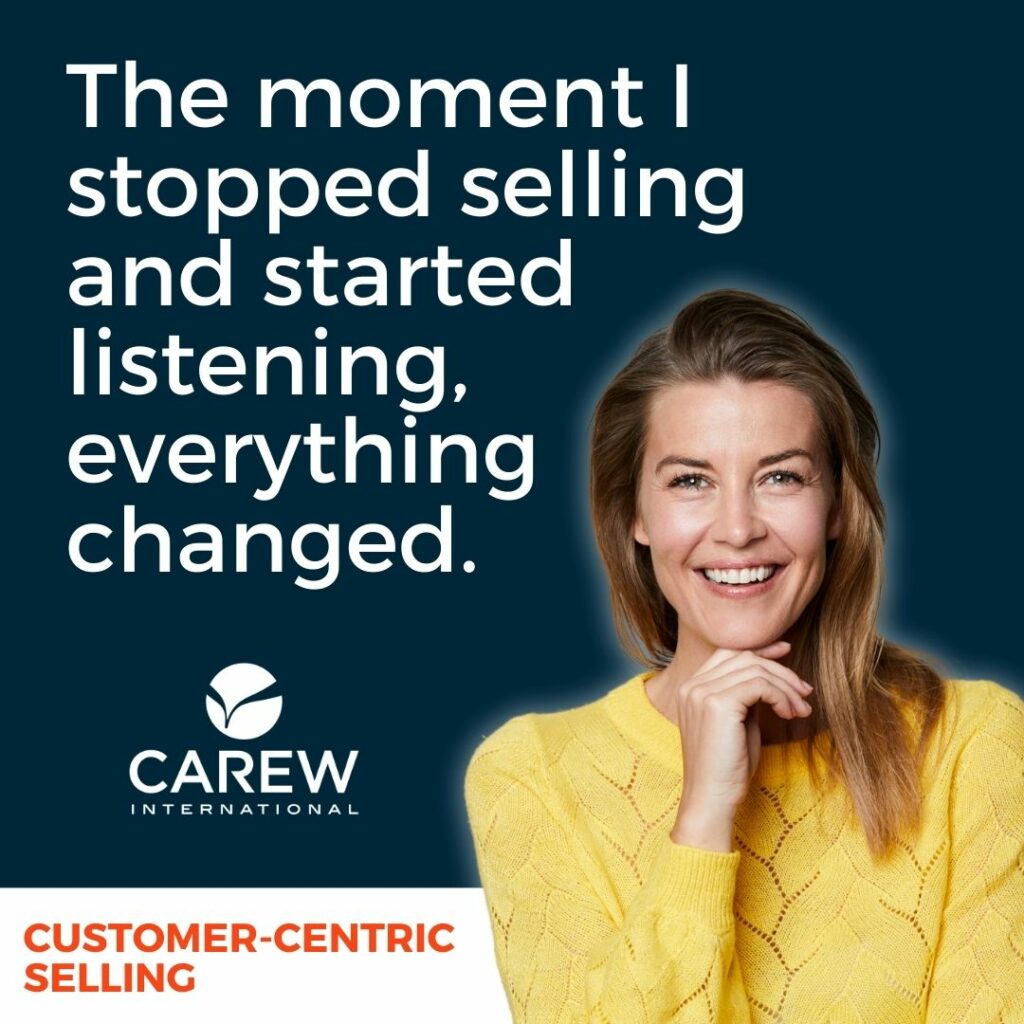
When you’re just chasing quota, it shows.
When you’re working from a script, it sounds that way.
When you lead every call with your pitch, you miss the most important part of the deal: trust.
If you want better sales results, build better relationships. And that starts by showing up for the customer’s needs, not your own.










